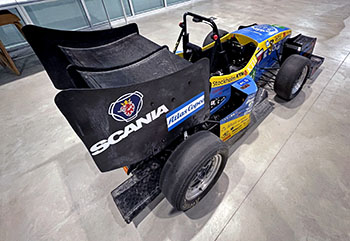100 students behind advanced new racing car
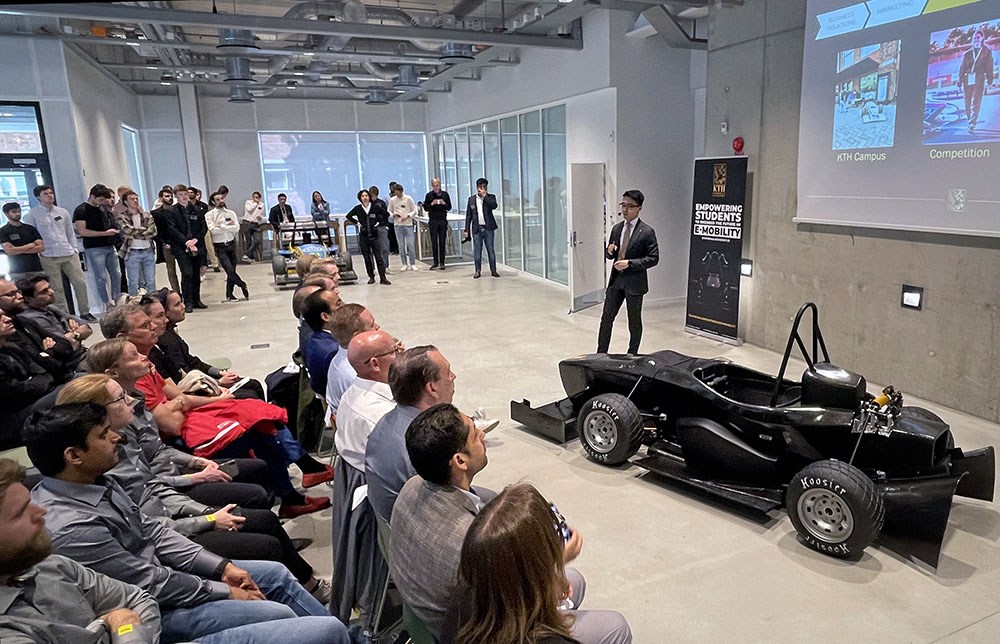
Since 2004, students at KTH have built no fewer than 15 racing cars. And now, number 16 is here. A brand new driverless vehicle, designed and built from scratch, with electrical and four-wheel drive and a self-supporting body. “The DeV17 is a car that ushers KTH Formula Student into a new era,” says Sara Kiprijanova, one of the 100 KTH students behind the new racing car.
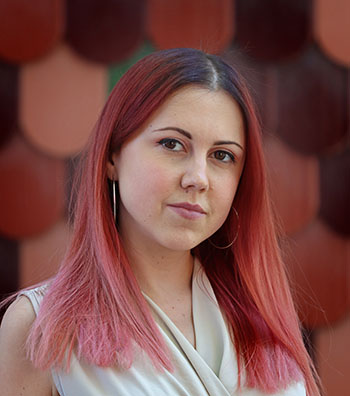
Teamwork, sustainability and innovation – these are the three words that Sara Kiprijanova says distinguish the three-year DeV17 project. She is studying the Energy for Smart Cities (EIT InnoEnergy) Master’s programme at KTH, and says that the DeV17 is a test and development platform for current and future KTH students to take Formula Student racing cars into an electric and driverless future.
“For the first time, KTH Formula Student has designed a self-supporting body to replace the frame construction of previous racing cars. This has enabled a lower centre of gravity, thus improving the car’s performance and road characteristics,” says Kiprijanova.
Better roadholding
The DeV17 has also been improved in terms of aerodynamics. This gives the car better roadholding through greater downforce, and also enables more efficient cooling of the parts of the driveline that need it. With four-wheel drive via hub motors rather than a standard electric motor and rear-wheel drive, roadholding has been improved during acceleration.
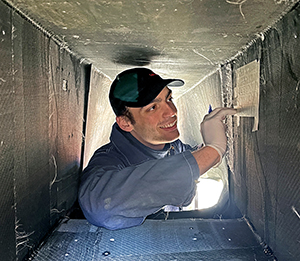
“And last but not least, we’re proud of the changes we have made to the self-driving system. It has undergone major improvements since KTH Formula Student previously competed in 2019. The driverless aspects can be divided into three parts: navigation, localisation and perception. Together – in the form of computer vision, profound learning and LIDAR data acquisition – the three parts can render the vehicle autonomous.
Only Swedish team
Speaking of competitions, the DeV17 will be taking part in a race this year. KTH Formula Student is the only Swedish team to qualify for the prestigious international design competition, Formula Student Germany, which will take place at the Hockenheim Ring on 15–21 August.
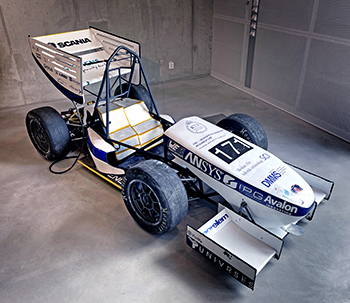
“This competition is backed by major companies like Porsche, Audi and Tesla, and they’re also involved in judging the students’ entries. We’ll be competing against the best teams in the world, and we believe our unique design will put us among the very elite.”
No one is an expert at everything
So what have Sara Kiprijanova and the other KTH students learnt from being involved with KTH Formula Student? A lot.
“It’s impossible to put the experience you can get from being part of a Formula Student team into words. Working under pressure in a fast-moving environment can lead to mistakes, which in turn leads to uncertainty and a lack of motivation. We learn to be resilient, to take the initiative, to make sure we notice the mistakes we make and do better next time. We also learn the importance of teamwork, and the fact that teamwork is the only way to achieve success. No one can possibly be an expert at absolutely everything.”
Peter Ardell
